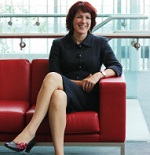University of Edinburgh CMALT Holders
A List of Certified Members of the Association for Learning Technology (CMALT) currently working at Edinburgh University.
Alex Burford

Learning Technologist
School of Informatics
CMALT provides an excellent framework in which to improve critical reflection skills and document your practice. I really enjoyed the process of reflecting, and writing, regularly - alongside the opportunity to meet and talk with other practitioners in the field. There was also an enormous sense of achievement when I passed.
Graeme Ferris

Technology Enhanced Learning Manager
Digital Services, Business School
Working towards CMALT as part of a cohort from the University was a really useful experience for me. It was very helpful to have the support available to keep me on track and a peer network to share experiences, especially with those in different roles and departments.
The portfolio is structured in such a way that it helps you to identify and reflect on aspects of your own role that you may not have given due consideration to previously, as well as those that you consider your core activities.
For me, achieving CMALT accreditation through a peer-assessed framework feels like a validation of my work within a wider community of practice and I would highly recommend others to work towards their own accreditation.
I would be very happy to talk with anyone thinking of pursuing CMALT.
Lorna M. Campbell

Service Manager – Learning Technology
Education Design and Engagement, Learning Teaching & Web Services, Information Services Group
As a long standing member of ALT and member of the ALT Board of Trustees I’ve been meaning to submit my CMALT portfolio for longer than I should probably admit. The University of Edinburgh's CMALT scheme, led by Susan Greig, gave me a much needed push to take the plunge. As an open education practitioner I decided to practice what I preach and develop my portfolio on my open blog: http://lornamcampbell.org/cmalt/. I shared my progress with the #CMALT community on twitter along the way and it was both helpful and encouraging to benefit from the support of a wide range of peers and colleagues. Creating my open portfolio provided me with a great opportunity to step back and reflect on my long and diverse career in learning technology and I found the whole process to be a really positive experience. I would certainly encourage colleagues to undertake CMALT, there is a wide range of support available and I’d be particularly happy to talk to anyone who is interested in learning more about developing their portfolio as an open resource.
Dr Louise Connelly

Senior E-Learning Developer
Digital Education Unit, Royal (Dick) School of Veterinary Studies
CMALT is a recognised qualification which enables me to be part of a larger community of practice. The process gave me an opportunity to pause and reflect on what I have achieved, what I could have done differently, and what I would like to do in the future. As the accreditation is peer assessed, I also felt that it is a worthy and recognised accreditation. I would recommend others to go through this process.
Marcello Crolla

Instructional Designer
Education Design and Engagement, Learning Teaching & Web Services, Information Services Group
Writing my CMALT was a great opportunity to reflect on my career to date. This allowed me to see how much my role has changed and developed over the years. Learning technology moves at a rapid pace and I really enjoy the opportunities and challenges it brings. When writing my CMALT, it also gave me the opportunity to look at how much I have developed within my career too, whilst also taking time to look at where I would like to go forward in my career.
If you are working in the field of learning technologies or even if you have an interest in this area and it is part of your current role, I would highly recommend this. It is a fantastic way to reflect on your achievements and future goals. Would be happy to chat with anyone who is considering applying for CMALT.
Melissa Highton

Director of Learning, Teaching and Web
Information Services Group, University of Edinburgh
When I wrote my initial CMALT application in 2008 I was just about to leave University of Leeds to embark on a new adventure in a new role as Head of Learning Technologies at University of Oxford. I stayed in that role for 6 years, becoming Director of Academic IT as the teams and workload grew. During my time there I experienced a number of significant shifts in my thinking particularly around received learning technology wisdom and the true nature of ‘a community of practice’. My move to Edinburgh in 2014 brought me back into the world of large classes and overloaded student systems. The University of Edinburgh has taken some ‘interesting’ IT decisions in the past. Along with the rest of the senior management teams I am currently involved in a major programme of digital transformation and innovation in central IT which provides a new opportunity to communicate and disseminate effective practice and shake up some of the old ways of doing things. Each institution is different and in each there is always a vertiginous learning curve. There are core areas of content and understanding which underpin our work as learning technologists and a healthy attitude to updating, learning and reflection is essential. I re-certified via CMALT in 2017 upgraded to Senior CMALT in 2018 and 2021. I’m happy to share my portfolio and my blog SCMALT – Melissa Highton (ed.ac.uk)
Neil Davidson

Learning Technologist
Edinburgh Law School
I really valued the opportunity to step back from the cut-and-thrust of everyday work and think and write about my experiences as a Learning Technologist. The process of reflection across the different areas of the CMALT portfolio enabled me to think about my career in a way which I hadn’t before, and also to recognise things I had achieved but not necessarily acknowledged at the time. Having these achievements recognised by my EdTech peers was a really welcome boost and the feedback I received on my portfolio was really thorough, fair and constructive too.
One of the best aspects of the whole process was being part of a community of similarly-minded colleagues working towards the accreditation and meeting regularly to share our experiences and travails. I’d thoroughly recommend it to others.
Nick Daniels

Learning Technologist
School of Philosophy and Language Sciences
It was a good experience being part of a cohort of staff working on our CMALT portfolios. We all work with learning technology in slightly different contexts, and it was good to meet up and hear about projects others have been doing with digital education.
Putting together my CMALT portfolio helped me to take a step back from my work and think about how it fits into a wider context. For instance, I wrote in my portfolio about how considerations of copyright and open licensing changed the way we made MOOCs in our School. I also wrote about how my previous experience as a classroom teacher has influenced my views on how technology can best support educational aims.
Having to write concisely about your work requires you to get your thoughts in order. That’s a valuable activity in itself, and alongside the community aspect, is the main reason I would recommend CMALT to colleagues working in learning technology.
Nicola Symmers

IT Developer
I’d recommend the CMALT process to anyone thinking about it. Learning technology is a diverse field and CMALT is a great opportunity to learn about what others are doing. I valued the opportunity to reflect on my work over the last several years and to meet and talk with colleagues.
If you work with technology, you’ll know how important the people who use, create and support it are, so that the technology works for people rather than vice versa! I was fortunate to be part of the university cohort supported by Susan Grieg who led a series of writing retreats and workshops. Susan’s support was invaluable in providing a sense of connection to the wider work of the university and our learning technology community. If you’re considering applying for CMALT and have any questions about the process, I’d be happy to talk with you.
Rosie Tate

E-learning content developer
Infrastructure, Information & Learning Technology Services, School of Social and Political Science
I completed and submitted my CMALT portfolio in summer 2017 and throughly enjoyed the experience. Going through the process has encouraged me to be more reflective, which has allowed me to see where improvements in my work can be made. I found the group meetings hugely beneficial as we were able to explore different topics in a relaxed and supportive environment. Meeting new colleagues from across the university allowed us to support each other but it was also interesting to hear about projects they are currently involved in.
I would highly recommend becoming accredited and would be more than happy to speak to anyone interested in undertaking CMALT.
Sharon Boyd

Senior Lecturer in Distance Student Learning
The Royal (Dick) School of Veterinary Studies
I started working in further education in 2001, moving to higher education in 2007. It took me a long time to complete my CMALT portfolio, as I was unsure if I could be considered a learning technologist. I finally submitted my portfolio in 2014 when I stopped thinking about the job title, and focused on my engagement with technology and learning. I realised the portfolio was a reflection on how I teach, how I learn, and how technology enhances my learning and teaching.
Since then, I have completed a portfolio review and am preparing for another to maintain my accreditation. I have found the review process an excellent way to reflect on the activities I do, how/if my plans have changed, and what my new plan is for the future. I am also a CMALT assessor, and enjoy learning about the inspiring work of other learning technologists. The CMALT process continues to demonstrate that learning technologists are a diverse, innovative and exceptional group of professionals.
Stephanie (Charlie) Farley

Open Educational Resource Advisor
Educational Design and Engagement, Learning Teaching & Web Services, Information Services Group
Learning technology is such a broad and rapidly growing field, and approaching the CMALT accreditation as a group we were able to share the different ways we all approach and engage in learning technology both as professionals and learners. I learned quite a lot from my CMALT cohort, and can confidently say that I now have a deeper understanding of learning technology practices across the University and HE sector.
Looking back over my career and focusing in on the knowledge and expertise I’ve developed in learning technology, then articulating that experience in a portfolio was both challenging and extremely rewarding.
Having achieved CMALT accreditation in 2017 I’m now a CMALT assessor and definitely encourage other colleagues to use the process to evidence their skills.
Stuart Nicol

Head of Educational Design and Engagement
Learning Teaching & Web Services, Information Services Group
Preparing a portfolio for CMALT accreditation gave me a much needed opportunity to reflect on my practice as a learning technologist. The process of identifying and then communicating different examples of work and how they align to the various professional competencies was really insightful and helped me to consider both achievements and gaps. I would really recommend engaging with CMALT to anyone working in the area of learning technology as an opportunity to think more deeply about what we do, and how we do it. It’s also a great way to become more of an active part of the professional learning technology community.
Tracey Madden
Learning Technology Advisor
Educational Design and Engagement, Learning Teaching & Web Services, Information Services Group
Working to gain CMALT accreditation takes considerable dedication, but the results are most definitely worth it. The process will encourage you to take a detailed look at the work in which you are involved, both in terms of breadth and depth.
I would encourage anyone working in the area of learning technology, whatever their job title, to consider pursuing CMALT accreditation, and for those new to learning technology to consider the framework as a valuable way to scaffold their personal development in the early years.

